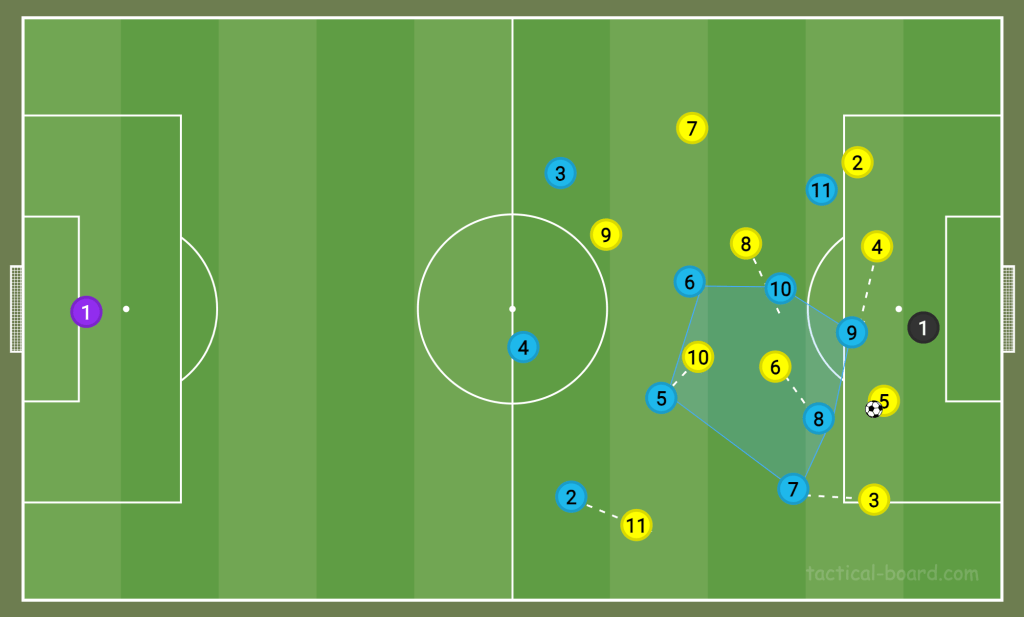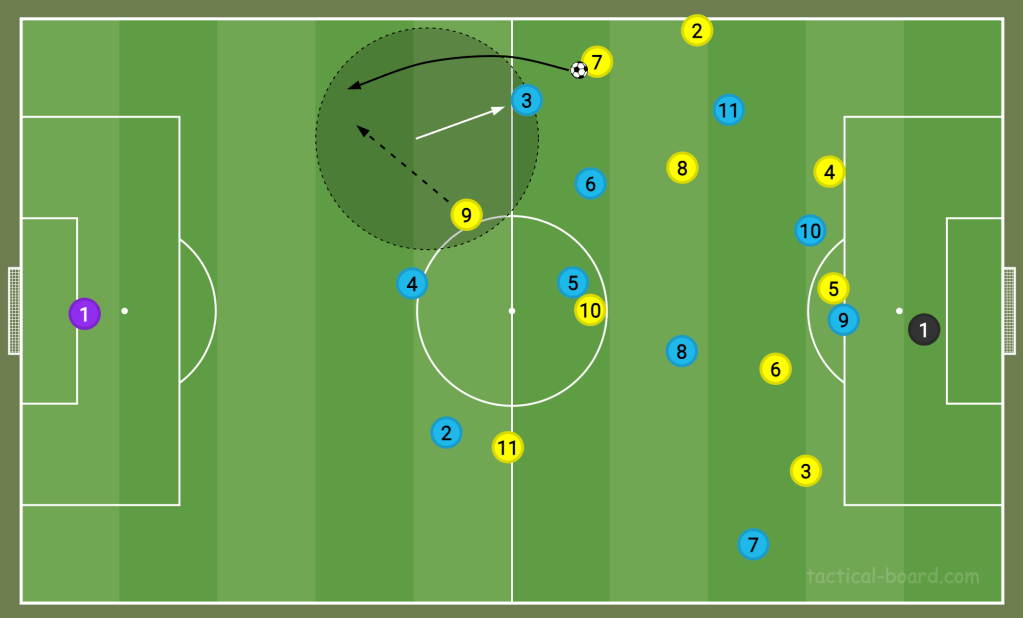Within two weeks, Pep Guardiola and Mikel Arteta have altered their approaches in the same way. They’ve replaced their 3+2 rest defence with a 2+3 rest defence shape. What does this mean?
The modern way of attacking a back four is to overload it with a front five. This leaves five remaining outfield players further back, who will stay tight and compact to protect the team against counter-attacks in (usually) either a 3+2 rest defence or a 2+3. This means they’ll either play with three centre-backs and a double pivot in front, or two centre-backs with a holding midfielder and a couple of half-backs on either side.
Why have Arsenal and City made this recent change? First, we need to understand that their 3+2 rest defence allowed them to create the popular midfield box to help them each dominate possession.
The 3+2 rest defence is what we see within a 3-box-3 formation, and this has helped teams like Arsenal, City, Liverpool, Barcelona, and Bayer Leverkusen counter-press aggressively when they lose the ball. Because this formation emphasises control in high, central areas, it is well equipped to stop counter-attacks at source.

However, when these teams do get bypassed and have to deal with an opposition counter, the 3+2 is poorly arranged to apply pressure to fast wingers. A wide centre-back has to push up, leaving a massive hole behind them. This is only going to help the opposition’s counter-attack.

Guardiola made the change to a 2+3 first, trialling it against Newcastle. He used it again (albeit slightly differently) against Everton, and Arteta reaped the rewards of the change against West Ham’s pacey forwards.
It allowed them to apply natural pressure to wingers without breaking shape, and there was always cover behind via the centre-backs.

On the ball, using Kyle Walker as a high and wide reference pushed the pressing winger back. This meant they were nowhere near the Man City ‘panic zone’ and couldn’t cause any damage on counter-attacks.
If they had insisted on staying in a dangerous area, this would have destroyed the press, and City would have found a way through before too long.


This could be a long-lasting change for City and Arsenal, who might find it also helps them with wide link-ups between half-backs and wingers.
However, the one snag is that the 2+3 rest defence makes counter-pressing more difficult. Why? Because the two No.10s are no longer No.10s. The likes of Kevin de Bruyne, Phil Foden, and Martin Ødegaard would now be No.8s because they wouldn’t have the benefit of two holding midfielders behind them, only one. This means they would have more defensive responsibilities to track back and couldn’t press so high anymore.

So, the change to a 2+3 rest defence helps apply pressure to counter-attacks already underway, but may not stop so many counters at source. If this turns out to be a change that sticks, we will likely see more organised counter-pressing shapes than the “everybody swarm the ball and block a potential pass” approach that has worked so well recently.

